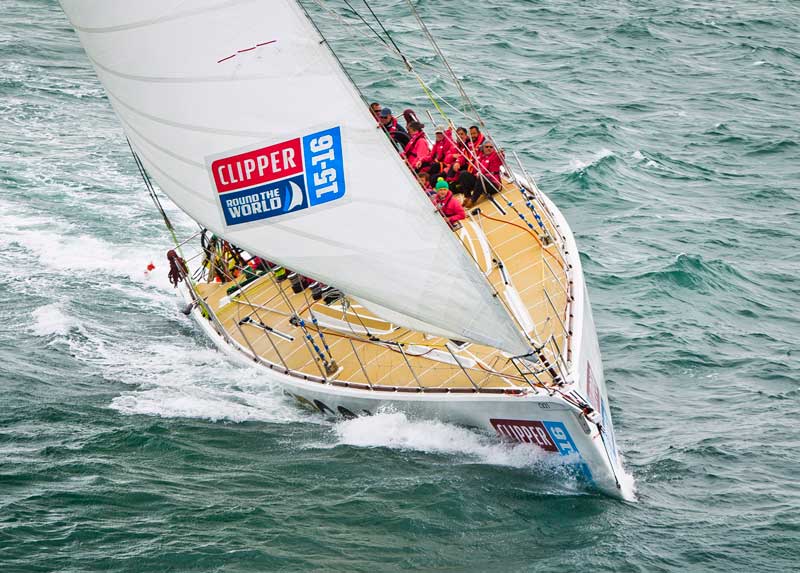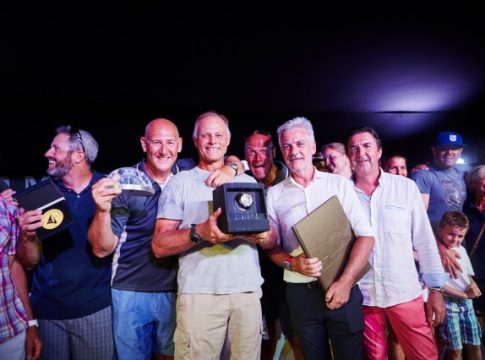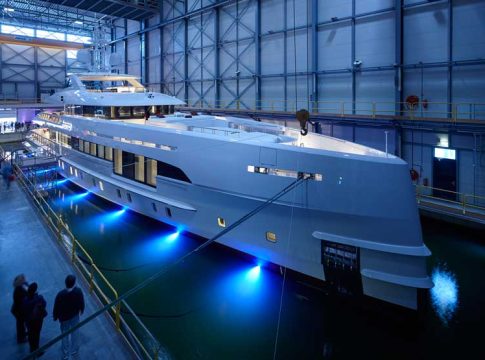The UK’s Marine Accident Investigation Branch (MAIB) has published its final report into two fatal accidents in the 2015-16 edition of the Clipper Round the World Yacht Race, the first in the event’s 20 year history.
The report highlights that the first fatality was a direct consequence of the crew member entering the cockpit danger zone, where they were struck by the mainsheet on the boom when the boat gybed (turned). The second fatality was the consequence of the crew member not clipping on when on deck, which is mandatory on Clipper Race yachts, and was subsequently washed overboard in adverse weather at night. The reasons why these individuals failed to follow their basic training in these incidents will remain unknown and theories are purely speculative.
The publication of the MAIB report has been welcomed by Clipper Race Founder and Chairman, Sir Robin Knox-Johnston, who comments: “The MAIB has an important role in ensuring that the valuable learnings from accidents are shared with the industry to help improve safety. These two fatalities, resulting from two very different incidents, were the first in our long history and are tragic, especially as they were caused primarily through momentary lapses in applying basic safety training.
“The report acknowledges that we have been proactive to mitigate the risks concerned even further. Safety has been our highest priority since the Clipper Race was established in 1996, amassing huge experience through ten biennial editions, 84 yacht circumnavigations (a cumulative four million nautical miles) with nearly 5000 crew undergoing extensive training. Manning arrangements and shore-based management have been developed to ensure skippers are adequately supported and these will continue to be regularly reviewed.
“We have developed our current manning levels and qualifications in conjunction with the MCA (Maritime and Coastguard Agency), operating to MCA standards as a minimum and often well in excess. We frequently implement and develop safety procedures where there is no actual requirement; they are under constant review as a matter of course and we will continue to do so in light of the report’s recommendations.”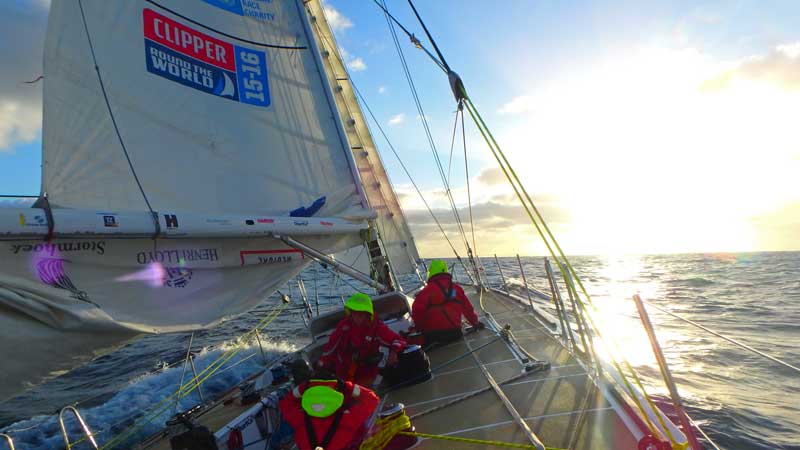
The Clipper Race has worked closely with the MCA for many years in developing its safety standards and procedures, and has helped develop MOB (man overboard) and recovery training with them and the MAIB prior to these incidents, which has included the assessment of AIS (Automatic Identification System) beacons. A minimum of at least one crew member per team is trained to qualify for a Clipper Race Coxswain Certificate, developed with, and approved by, the MCA, to support the skipper and take over in the event that they are incapacitated.
Clipper Race training is designed to ensure that amateur crew can handle the specific demands of large yacht ocean racing and even novices emerge as competent sailors. Training also includes an independently provided sea survival course recognised by the RYA (Royal Yachting Association) and World Sailing, even though it is not a requirement.
Sir Robin added: “We will continue our long established collaboration with the MCA and MAIB, to develop, test and improve safety standards, devices, methods and procedures, not only for the benefit of Clipper Race crew but also to pass on any lessons learned, during the toughest around-the-world race that is available to amateur crew, to the sailing community at large.”
Ocean Racing is at the mercy of the elements and these can include extreme weather consisting of high winds and big seas, posing a risk of potential injury to crew and damage to yachts. Good maintenance, operating standards and procedures are used to minimise these risks and ensure that safe working practices are maintained. The Clipper Race aims is to ensure all risks are identified and managed, providing appropriate levels of safety, aboard its own matched fleet of twelve identical 70-foot yachts.
Many crew are attracted by the scale of the challenge and adverse conditions to achieve something remarkable, whether it be a single ocean crossing or an entire circumnavigation. The weather makes no exception for their status; they face the same harsh conditions as any other ocean race. Hence, professional standards are applied throughout. At more than 40,000 nautical miles, the Clipper Race is one of the world’s toughest endurance challenges.
The eleventh edition of the Clipper Race will start from the UK in August this year and return in late July 2018.
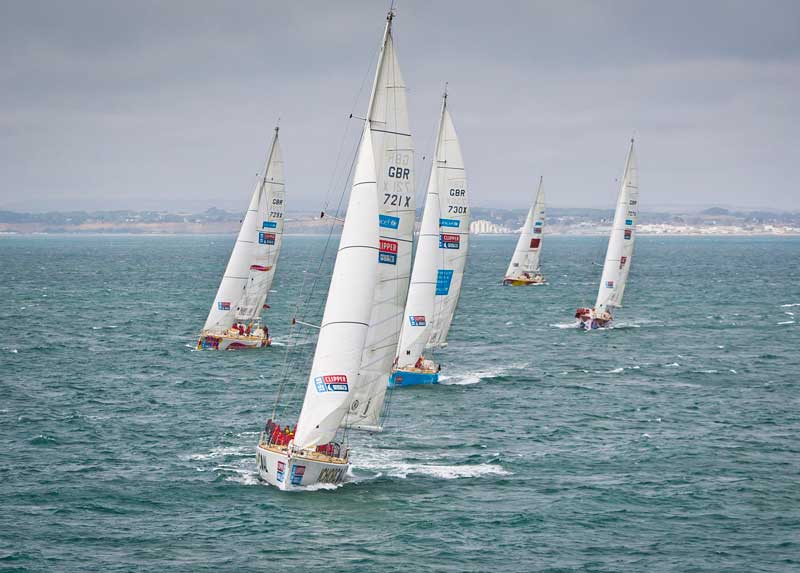
INCIDENT SUMMARIES AND KEY POINTS
ANDREW ASHMAN (49) – A paramedic from Orpington, Kent, was participating in three legs of the Clipper 2015-16 Race.
The incident occurred on 4 September 2015, a few days into the first stage of the race from London to Rio de Janeiro in the North Atlantic approximately 120 nautical miles west of Porto, on the Portuguese coast. Andrew Ashman, an experienced sailor who had completed the Clipper Race’s mandatory four part, four week, intensive training, stepped over the main sheet traveller, a high obstruction in the danger zone between two prominent winches, when he was hit by the mainsheet on the boom. He sustained a high impact neck injury that is believed to have killed him instantly. This is a high-risk area taught to the crew during training because of the danger of being hit by the boom.
There are a number of scenarios which may cause this to happen. In this instance the boat performed an accidental double gybe (turn) resulting in the failure of a strop holding a ‘foreguy/ preventor’ line. The report acknowledges that it is probably not feasible to design a preventer system that, for yachts of the size used by the Clipper Race, will not fail under any circumstances; indeed, it could be more dangerous if it did not. However, MAIB has recommended that the Royal Yachting Association, World Sailing and British Marine work together to provide advice on the use and limitations of different rope types and for the manufacturers in this instance to review the information provided on their data sheets and to work with other rope producers to share any limitations with the marine sector for more accurate calculation of their strength and breaking strains.
SARAH YOUNG (40) – A company owner from London was participating in the full circumnavigation of the Clipper 2015-16 Race.
The incident happened on 1 April 2016, day 12 of the North Pacific leg from Qingdao in China to Seattle on the west coast of the US, at 39 North, 160 East, approaching the International Date Line. Round-the-world crew member Sarah Young was on deck at night during a storm with wind speeds over 40 knots, gusting over 60 knots, following the reduction of sail area to respond to the adverse conditions, when a wave broke over the deck causing her to lose her footing ending up next to the guardrail when a second wave washed her overboard as she was not connected to the boat by her safety tether.
The conditions were horrendous and by the time Sarah was located via her AIS beacon and recovered from the heavy seas she had sadly perished. Due to the long distance from landfall Sarah was buried at sea once the sea conditions had calmed sufficiently.
In adverse weather crew will perform to the best of their ability in the prevailing conditions when a ‘text-book’ procedure may simply not be practical. The MAIB acknowledge that the Clipper Race has all these factors under constant review and recommends it should continue to minimise the risks associated with a Man Overboard (MOB) incident. Recovery will always be challenging which is why so much emphasis is placed on the use of MOB drills and safety tethers. The MAIB have attended the Clipper Race’s frequent tests of equipment and procedures prior to these incidents.
The following aspects were highlighted in the report:
- Tethering arrangements and procedures have been developed in consultation with the MCA and MAIB and will continue to be reviewed regularly. The Clipper Race has two tethers on the special life jackets that are manufactured for each race. MAIB personnel were present for testing and acceptance of the current system.
- The Guardrail was designed to provide even greater protection than UK Government regulation requires. It is no substitute for clipping on, and would not prevent someone being thrown over the top of the guardrail. This is really a matter for the Ocean Racing Council, the International body that makes the yacht racing safety rules, to revise the standard if they think it appropriate.
- AIS beacon carriage is not currently a requirement in any race, however the Clipper Race was the first to put AIS beacons on Dan Buoys, which are thrown into the sea to mark the position of a person who has fallen overside and will track their movement in the prevailing wind and currents. A number of beacons have been trialled for reliability. The issue of it becoming a requirement is a matter for the RYA, World Sailing and the MCA to comment. In Sarah’s case she wore a personal AIS beacon which had to be manually activated.
- Sea Survival Training is not actually a requirement. The Clipper Race includes a course run by external providers which incorporates the demonstration of spray hoods as part of the syllabus. The courses used are those approved by the MCA, RYA and World Sailing. Health and safety considerations implemented by the providers restrict the level of ‘realism’ in terms of clothing and pool temperatures, but still provide a very valuable insight and practice for crew. The Clipper Race will review further with the providers but it should be noted that the same course is used by professional fishermen, an industry which has suffered 94 fatalities in the last 10 years, 526 people seriously injured, with some 200 boats lost.
- MOB Recovery Training is provided extensively during pre-race training and throughout the race. Each boat is equipped with a 75KG dummy for MOB and recovery drills following development trials attended by the MAIB. The crew experience a wide range of weather conditions during their training and on the race, so they know what to expect, but there comes a point where it is not safe to run a drill in very adverse conditions.
- Sail Plan Arrangements used by the Clipper Race, using piston stay hanks, are regarded as the safest and most reliable method. Adverse conditions hamper bringing sails down in any arrangement.
The full report is published on the MAIB web site at 00.01 HRS BST Thursday 13 April 2017 here: https://www.gov.uk/maib-reports


